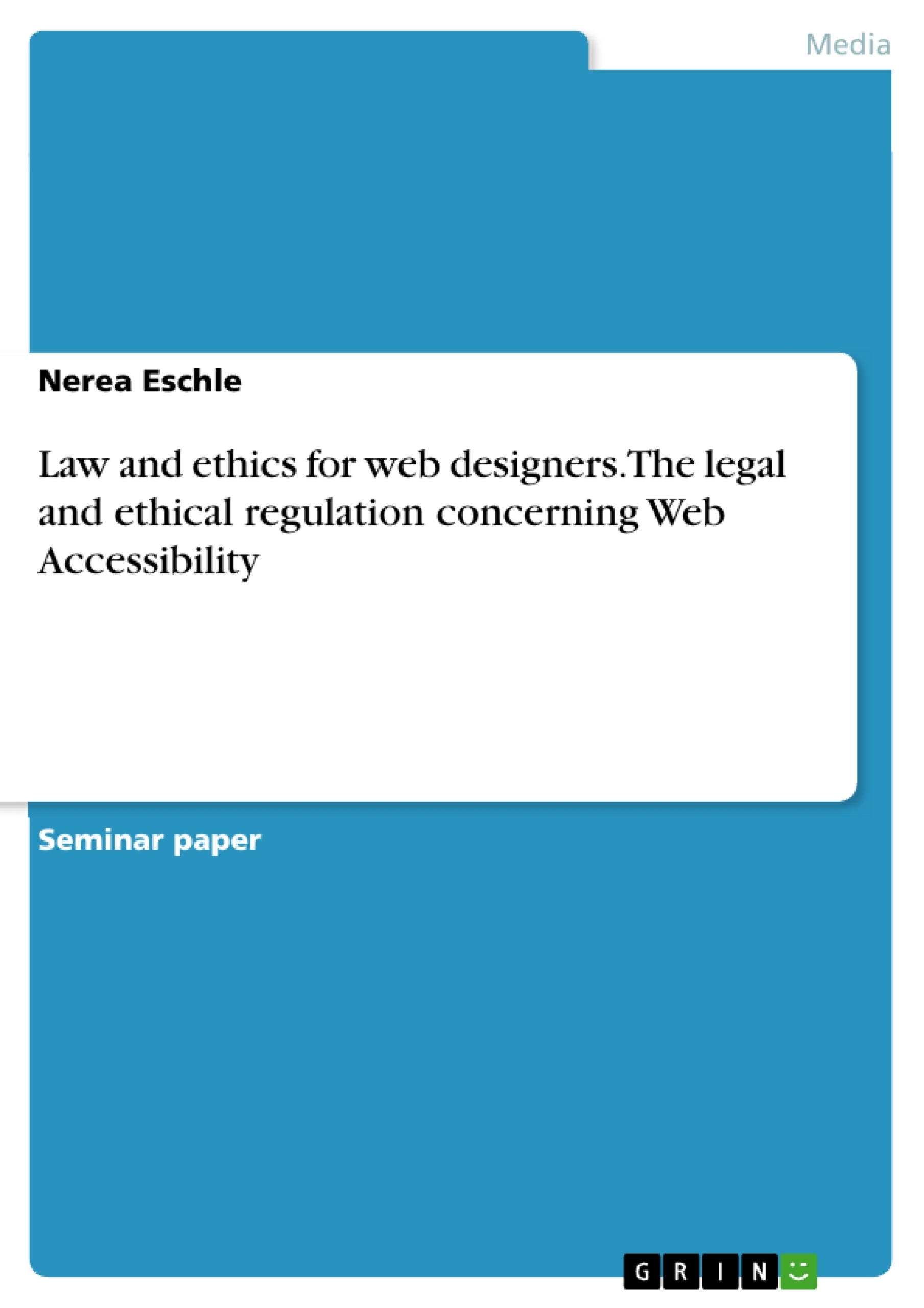This thesis is dedicated to accessibility laws, voluntary guidelines, and professional regulations and how they interact with web designers. So the research question asks: How do web accessibility laws and professional codes of ethics affect the web designer's profession and working life? To answer this question, the first part outlines the extent to which web design is a profession and how it has evolved. In the second part, the concept of accessibility, disability, and approaches to accessible design are discussed, then the legal regulations and professional ethics are considered, and finally accessible design in practice. In the end, a conclusion is drawn to summarise the findings and provide an outlook.
The World Health Organization estimates that about 6 to 10 out of every 100 people live with a disability. It is estimated that a total of 135 million people in the European Region have a disability. This number could increase in the coming years as the population ages (WHO Regional Office for Europe). All of these people will most likely face significant barriers when it comes to information and communication technologies (ICTs), such as poorly designed websites where graphics cannot be read by screen readers or information that can only be accessed with a mouse instead of also with a keyboard. This is fatal at a time when information and communication technologies are becoming increasingly important in our everyday lives. A so-called "digital divide" between people with access to information and those without, could emerge due to rapid technological progress. This potential development makes accessibility such an important issue so that people with disabilities also have full and equal access to information. Accessibility is not just about information. It's about enabling people with disabilities to live empowered lives and participate in the online environment where engagement and participation in contemporary politics, culture, and media take place. In that regard, a change has been taking place since the last decades, and disability is more and more recognised as an important part of society, of the public and private sphere, and daily life.
Inhaltsverzeichnis (Table of Contents)
- Introduction
- The development of web design and it's status as profession
- Disability and the concept of accessibility
- Legal obligations about web accessibility: EU-directive
- Professional ethics about accessibility
- Accessible design in practice
- Conclusion
Zielsetzung und Themenschwerpunkte (Objectives and Key Themes)
This thesis investigates the impact of legal regulations and professional codes of ethics on the web designer's profession and working life. It aims to understand how these regulations and ethical frameworks affect the practice of web design, particularly in the context of web accessibility.
- The evolution of web design as a profession
- The concept of disability and web accessibility
- Legal obligations concerning web accessibility, specifically the EU directive
- Professional ethics related to accessibility
- The implementation of accessible design principles in practice
Zusammenfassung der Kapitel (Chapter Summaries)
- Introduction: This chapter provides a background on the importance of web accessibility, highlighting the challenges faced by people with disabilities in accessing information and communication technologies. It also discusses the growing importance of accessibility in the digital world and the emergence of legal and ethical frameworks to address these issues.
- The development of web design and it's status as profession: This chapter explores the evolution of web design as a profession, examining its historical development, the nature of professional expertise in web design, and the increasing importance of standardized practices and regulations. It also discusses the role of self-regulation within the profession and the impact of accessibility on its development.
- Disability and the concept of accessibility: This chapter defines the concept of disability and accessibility within the context of web design. It explores different approaches to accessible design and discusses the importance of considering the needs of people with disabilities in the design and development of websites.
- Legal obligations about web accessibility: EU-directive: This chapter focuses on the legal framework governing web accessibility in the European Union, specifically the EU directive (EU) 2016/2102. It examines the requirements of the directive, its impact on public sector websites and mobile apps, and the implications for web designers.
- Professional ethics about accessibility: This chapter explores the ethical dimensions of web accessibility, examining the professional codes of ethics that guide web designers in their practice. It discusses the importance of ethical considerations in creating accessible websites and the role of professional organizations in promoting ethical standards.
- Accessible design in practice: This chapter delves into the practical aspects of accessible design, providing examples and insights into the implementation of accessibility principles in the design and development of websites. It discusses various tools and techniques used to ensure accessibility and explores the challenges and opportunities associated with incorporating accessibility considerations into design processes.
Schlüsselwörter (Keywords)
This thesis explores web accessibility, focusing on the legal and ethical regulations that affect the profession of web design. Key concepts include web accessibility laws, professional codes of ethics, disability, user experience, accessibility guidelines, EU directive (EU) 2016/2102, accessible design principles, and the evolving nature of the web design profession.
- Quote paper
- Nerea Eschle (Author), 2021, Law and ethics for web designers. The legal and ethical regulation concerning Web Accessibility, Munich, GRIN Verlag, https://www.grin.com/document/1280442



